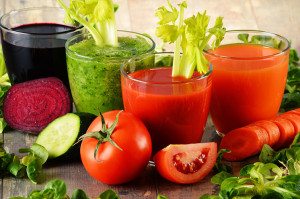There’s a widespread myth that eating healthy is more expensive than eating unhealthier processed foods. And while the price tags on organic products may be higher, there are lots of ways that eating healthier foods will actually save you money.
Here are some strategies to stretch your food budget while eating healthy, delicious food:
1. Avoid hidden sugar
It’s the “secret” ingredient in virtually all processed foods (including things like bread) that makes you overeat without even realizing it.
Learn the other foods to avoid by clicking here.
Manufacturers use literally dozens of different names for sugar because they know that if you know how much sugar they’re using, you won’t buy their products.

Some of those names are honey, inverted syrup, agave and cane syrup, cane juice, fruit juice concentrate, molasses and brown sugar. Any word that ends in –ose, like fructose, glucose, lactose and maltose, is a sugar.
Hidden sugar causes dramatic swings in your energy levels and it’s the single most important reason for our diabetes and obesity epidemics. Refined sugars in processed foods make you feel hungrier, faster, so you eat more, than do unrefined sugars, such as those found in a piece of fresh fruit.
So you can save money on your food budget and reduce your health risk by reducing or cutting out regular or diet soda, cookies, crackers, snacks, prepackaged foods of all types and other processed foods. These foods are designed to make you overeat. But if you don’t buy them, you can’t overeat them.
2. Plan your cooking
Plan your cooking to create leftovers. It’s easier to cook just 2 or 3 meals a week, rather than 6 or 7: you can freeze and reheat leftovers. You’ll save time, money and power.
You can also go even further and cook for the whole month at once.
A neat trick is to put all the ingredients for a stir fry or crock pot meal into a freezer bag, along with a separate baggie for the sauce. Then, all you have to do is empty the bag, pour the sauce, and cook.
3. Don’t just buy at the chain supermarket. There are other options!
Find a good ethnic supermarket. The prices will almost always be better—as will the selection of meat, fish, fruit and vegetables, spices and other seasonings—than at your typical supermarket chain.
Ethnic corner stores (which may be tucked away in unexpected places like storage centers) can also have an excellent selection.
Farmer’s markets cut out the middle man so you can buy very high-quality produce from the farmer. Go at the end of the market and ask for a discount on any remaining fruits and vegetables or bread.
4. Get in and out as quickly as possible
- If you are on a store’s mailing list (electronic or otherwise) remember that it’s the processed foods that are usually on sale. Make sure that when you see sales and bargains on real, unprocessed foods you’ll use, that you have a recipe for them.
- Shop the perimeter of the store to buy fruits, vegetables, meats and milk products first. Spend as little time as possible in aisles with processed foods so you buy as little of them as possible.
- Be ultra-suspicious about buying anything on the end caps or near the checkout register: this precious real estate is reserved for the most profitable items.
5. Stretch your budget at the grocery store
- Always buy generic or store brands when possible. The quality is often the same—you’re just not paying for advertising.
- You can buy many healthy foods, such as lentils, grains, cereals, and spices, in bulk bins at stores. Their prices can be as much as 75% less than the prices of prepared (canned or frozen pre-cooked) or quick versions, and even lower compared to processed and prepackaged foods.
- Whenever possible, buy in-season produce.
- Frozen produce is just as nutritious (and sometimes more so) than fresh. The prices are often better, too, especially for expensive items like berries or artichokes.
- Ugly is beautiful: food is often discounted when it’s imperfect. Blotched or bruised fruit, dented cans and day-old-bread are often terrific bargains. There’s usually nothing inferior about the food’s taste or nutritional value.
6. Cut the cost of organic
Organic foods usually meet stricter standards for ‘whole’ and ‘natural’ foods. (More about why they are important in our article: When to Go Organic.) However, they also tend to be more expensive. You can minimize this extra expense with a few easy tips:
- If you are concerned about genetically modified organisms (known as GMOs), look for a mention on the label that a food is not genetically engineered.
- Simply by not buying highly-processed foods, you will avoid the two unhealthiest GMOs, corn and soy.
- Read the ingredient lists of readymade foods and packaged staples: if you know the ingredients to be whole (e.g., garlic) or at least benign, that food is probably fine.
- Learn which types of produce are better organic because they won’t have pesticide and herbicide residues. They’re usually fresher and cheaper at local farmer’s markets.
7. Avoid overbuying
- Try to never go to the store without a shopping list. Also don’t shop hungry. If you’re hungry, you will buy stuff that’s not on your shopping list. And unless you have a very good reason, don’t buy it if it’s not on your list.
- The annual membership fee for a discount store like Costco is usually very small compared to your savings. These stores sell in bulk so have a plan to freeze, store, or otherwise use what you buy in bulk.
- Buy staples in family-size packages, even if you are only cooking for one or two people. Store foods in the refrigerator that would usually go in the cupboard or pantry, such as flours, cereals, pastas, legumes, coffee, tea, and natural sweeteners, to keep them fresh longer. You can store hard cheeses, fluid cow or nut milks (not soy or goat milk), nuts, and especially seeds in your freezer.
- If you, your family, or housemates still can’t handle the bulk, see if you can split it with other folks in a similar situation. You can do this with friends, co-workers, outside family members, or even through a website where people register to buy in volume and split the goods to save money.
- In a gourmet health-oriented store, you may want to try new things. But ultimately, you want to choose what the best deal may really be, whether something is staple or a special occasion treat.
8. The priceless payout
The cost on the label doesn’t always reflect the value of the food. Sometimes healthier foods, like brown rice, are a little more expensive than their less-healthy alternatives, like white rice. However, they’re so much more satisfying and nourishing that you can cook (and eat) less of them.
You’re also investing in your health. In addition to the immediate savings that you’ll realize when you avoid buying extra snacks and junk food, you’ll also have fewer health-related expenses. We’re talking about doctor’s visits and hospitalizations, medications (and more medications mean more side effects which usually mean more medications in a vicious downward spiral), and lost work days, to name just a few of the issues.
There is the price you pay in reduced self-esteem when you don’t like the way you look. Or when you don’t have the energy to do the things you love with the people you love. Or when your health goes downhill—even though many health problems are preventable by eating the right foods.
Want to learn more about how to combine these foods in the right proportions to kick your metabolism into high gear and reclaim your body, your health and your life?




I am confused about the 5 foods to never eat. One of the five is bananas. Yet bananas are offered as a choice in the menus. Will you please clarify this?
Hi, Patricia. Banana is actually not one of the five foods. The confusion might be from the banana graphic that the internet provider uses for our site link in the advertisement.
I am new to this, but I am worried about the cooking aspects, as I do not usually cook since my husband died.
Also being 82 years old, there are lots of things I do not like, such as fish and sauces such as Pesto, so how can I manage to do this?
Hi, Mrs. Reynolds. I’m sorry to read of your husband’s passing. You don’t have to get involved with a lot of extra cooking at all, nor do you need to eat foods you don’t like. To use foods with which you are more comfortable, you can move to the personal version of the Menu Planner (the right-most option here: https://www.trimdownclub.com/menu-planner). I also encourage you to check out our shopping guide (https://www.trimdownclub.com/where-to-buy-uk) – one of the sites (http://www.goodnessdirect.co.uk) includes brief explanations of some of the global foods we include in our lists, as does our Articles collection. If you would like additional guidance, please do repost here, and I would be happy to help in whatever way I can.
Have done y menu for a week what is next.
Hi, Meska. We recommend a shopping trip in which you purchase the items for your menu and invest some time reading labels to get familiar with making good choices. You can refer to our Articles collection for some how-tos. Then just follow your menu, and keep track of how you’re feeling (including hunger and energy levels). In parallel, we recommend taking on physical activity. If you would like guidance with th is, please do repost here, and I will be happy to help.
Can I just eat the one day ready meal plan for the entire week? I don’t mind eating the same thing and that would reduce the shopping list. Since you can’t buy 3 waffles, you buy 6, to buy all the nuts is expensive so if I can eat the pecans everyday, so on.
Hi, Robin. Absolutely!
I would like to know how to adapt your meal planner to my way of eating. I am never hungry, but must eat because I am a Type 2 Diabetic. I have weaned myself off crackers, and am trying to eliminate bread from my diet altogether along with flour products. That’s a big job. I just need to know the basic plan for your meal base–starch/protein/ vegetable or something of this sort. I need to be able to live with the foods that I am eating in the correct portions. My sugars are not bad, and am frustrated. I believe I should just go with what a company says is 1 portion on the box or bag, and develop my meal plans that way. I don’t want to have to go out and by these organic and health store products which are pricey, and for me, not necessary. More exercise is another key because of the pain levels that I have. I need thoughts about how o mesh the above with your program.
HI, Deeann. The entire Trim Down Club program is designed based on principles of a healthy diabetic diet, so no worries. Optimally, we would like to get you preparing foods from scratch from whole ingredients you can buy in bulk, which is healthier and less expensive – we encourage you to avoid packaged foods as much as possible, and use measuring cups for portion sizes until you get used to what portions look like. As for flour products, you can select legumes as your carbs instead, which studies show are very good for diabetics. As for your frustration, the best way to give your body a boost is through physical activity. If you would like some guidance in that regard, please do repost, and I will get back to you.
I am a First Line Therapist (in health and nutrition) and I LOVE this! It makes the whole process of shopping and meal planning so easy! I’m going to recommend it to everyone I know!
Hi, bobbie. SWG, or sprouted whole grain, means that the grains have been allowed to sprout before drying, milling, and incorporation into foods. This makes the nutrients more available to the body, and therefore more supportive of health and healthy weight management. You can read more about it here https://www.trimdownclub.com/what-is-swg-bread/.
Hello I am very new to this website as well as eating healthy in general. I have a lot of questions requarding the shopping list that the website made for me based on the foods I chose. One thing to start off with I am confused as to what SWG exactly means. Can somebody explain it to me please.
I think this article is great and it helped me out a lot but I am still struggling with the food choices because I am a picky eater
Hi, Ruby. Try the WalMart Supercenter in DuBois (20 Industrial Dr.). They have great prices on the types of foods we recommend, and very reasonable shipping costs if you want to buy online (though some items are for in-store purchases only). Also keep in mind that you don’t have to buy expensive items – if you just stick with whole unprocessed foods (including the type you buy in bulk) you will already be getting a great deal of benefit without breaking the bank (for example, dried pinto beans for $1/pound). If you have specific concerns, please do repost, and I will work with you.
TDC has no clue to what a budget is. especially a low budget.
“Learn the other foods to avoid” article was tremendously informative. Knowing how the body works is so helpful in making choices.
Hi, ycnan. I suggest you use the full Menu Planner application (in “Apps” above) rather than the Ready-to-Go menus. In the application, you can choose what you want to eat.
I decided to go to a small,local farmers’ market as part of my joining the Trim down club. I bought fresh veggies, honey and strawberries. I cooked fresh beets for the first time! The carrots and cauliflower were fabulous and I ate them raw. I used many of the veggies I bought in my vegetable choices on the menu plan. Towards the end of the week I used up leftover vegetables and made a huge pot of soup. I used your hint about making a large portion and freezing some. The visit to the outdoor farmers’ market got me in the fresh air and the fresh veggies were tempting and delicious. This was a new and rewarding experience for me. Positive experiences such as this one go far in establishing a new way of thinking about eating healthy. Many thanks from Mamipoo
I do not like the foods you have to eat.why not simple like what veggies meats and breads
Hi, ycnan. Our Menu Planner lists include those foods as well. No worries.
thanks for the hints!
Good article…